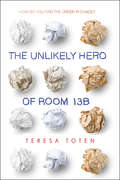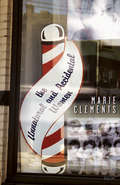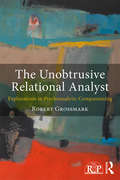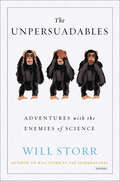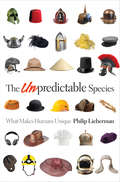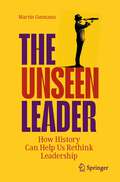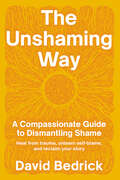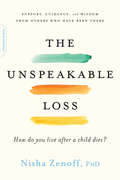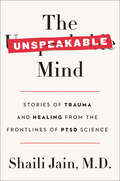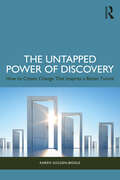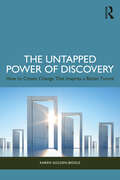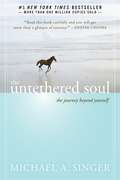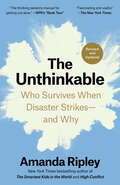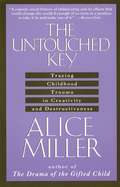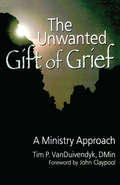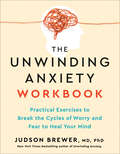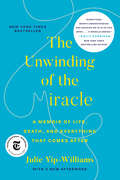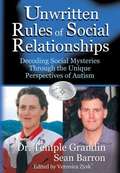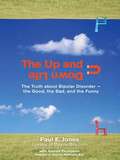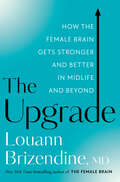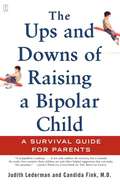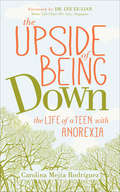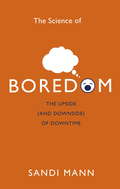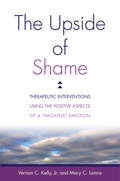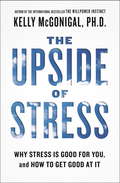- Table View
- List View
The Unlikely Hero of Room 13B
by Teresa Toten<P>Adam Spencer Ross is almost fifteen, and he's got his hands full confronting the everyday problems that come with having divorced parents and a stepsibling. Add to that his obsessive-compulsive disorder and it's just about impossible for him to imagine ever falling in love. <P>Adam's life changes, however, the instant he meets Robyn Plummer: he is hopelessly, desperately drawn to her. But is it possible to have a normal relationship when your life is anything but? <P>Filled with moments of deep emotion and unexpected humor, The Unlikely Hero of Room 13B explores the complexities of living with OCD and offers the prospect of hope, happiness, and healing.<P><P> Winner of the Scheider Family Book Award
The Unnatural and Accidental Women
by Marie ClementsSurrealist dramatization of a notorious case involving mysterious deaths on Vancouver's Skid Row. Cast of 11 women and 2 men.
The Unobtrusive Relational Analyst: Explorations in Psychoanalytic Companioning (Relational Perspectives Book Series)
by Robert GrossmarkPsychoanalysts increasingly find themselves working with patients and states that are not amenable to verbal and dialogic engagement. Such patients are challenging for a psychoanalytic approach that assumes that the patient relates in the verbal realm and is capable of reflective function. Both the classical stance of neutrality and abstinence and a contemporary relational approach that works with mutuality and intersubjectivity, can often ask too much of patients. The Unobtrusive Relational Analyst introduces a new psychoanalytic register for working with such patients and states, involving a present and engaged analyst who is unobtrusive to the unfolding of the patient’s inner world and the flow of mutual enactments. For the unobtrusive relational analyst, the world and idiom of the patient becomes the defining signature of the clinical interaction and process. Rather than seeking to bring patients into greater dialogic relatedness, the analyst companions the patient in the flow of enactive engagement and into the damaged and constrained landscapes of their inner worlds. Being known and companioned in these areas of deep pain, shame and fragmentation is the foundation on which psychoanalytic transformation and healing rests. In a series of illuminating chapters that include vivid examples drawn from his work with individuals and with groups, Robert Grossmark illustrates the work of the unobtrusive relational analyst. He reconfigures the role of action and enactment in psychoanalysis and group-analysis, and expands the understanding of the analyst’s subjectivity to embrace receptivity, surrender and companioning. Offering fresh concepts regarding therapeutic action and psychoanalytic engagement, The Unobtrusive Relational Analyst will be of great interest to all psychoanalysts and psychoanalytic psychotherapists.
The Unpersuadables: Adventures with the Enemies of Science
by Will Storr“A tour de force . . . [Storr’s] dogged approach to nailing many of the most celebrated skeptics in lies and misrepresentations is welcome.” —SalonWhy, that is, did the obviously intelligent man beside him sincerely believe in Adam and Eve, the Garden of Eden and a six-thousand-year-old Earth, in spite of the evidence against them? It was the start of a journey that would lead Storr all over the world—from Texas to Warsaw to the Outer Hebrides—meeting an extraordinary cast of modern heretics whom he tries his best to understand. Storr tours Holocaust sites with famed denier David Irving and a band of neo-Nazis, experiences his own murder during “past life regression” hypnosis, discusses the looming One World Government with an iconic climate skeptic, and investigates the tragic life and death of a woman who believed her parents were high priests in a baby-eating cult. Using a unique mix of highly personal memoir, investigative journalism, and the latest research from neuroscience and experimental psychology, Storr reveals how the stories we tell ourselves about the world invisibly shape our beliefs, and how the neurological “hero maker” inside us all can so easily lead to self-deception, toxic partisanship and science denial.“The subtle brilliance of The Unpersuadables is Mr. Storr’s style of letting his subjects hang themselves with their own words.” —The Wall Street Journal“Throws new and salutary light on all our conceits and beliefs. Very valuable, and a great read to boot, this is investigative journalism of the highest order.” —The Independent, Book of the Week
The Unpredictable Species: What Makes Humans Unique
by Philip LiebermanHow our brains have evolved so that we control how we think and behaveThe Unpredictable Species argues that the human brain evolved in a way that enhances our cognitive flexibility and capacity for innovation and imitation. In doing so, the book challenges the central claim of evolutionary psychology that we are locked into predictable patterns of behavior that were fixed by genes, and refutes the claim that language is innate. Philip Lieberman builds his case with evidence from neuroscience, genetics, and physical anthropology, showing how our basal ganglia—structures deep within the brain whose origins predate the dinosaurs—came to play a key role in human creativity. He demonstrates how the transfer of information in these structures was enhanced by genetic mutation and evolution, giving rise to supercharged neural circuits linking activity in different parts of the brain. Human invention, expressed in different epochs and locales in the form of stone tools, digital computers, new art forms, complex civilizations—even the latest fashions—stems from these supercharged circuits.The Unpredictable Species boldly upends scientifically controversial yet popular beliefs about how our brains actually work. Along the way, this compelling book provides insights into a host of topics related to human cognition, including associative learning, epigenetics, the skills required to be a samurai, and the causes of cognitive confusion on Mount Everest and of Parkinson's disease.
The Unseen Leader: How History Can Help Us Rethink Leadership
by Martin GutmannThe Unseen Leader delivers one simple but immensely powerful point: we need to radically rethink how we discuss leadership. In this book, American historian Martin Gutmann passionately challenges the received wisdom that history's great leaders were individuals with a proclivity for action and brash words. Drawing on extensive historical scholarship and contemporary leadership theory, Gutmann delves into the journeys of four unknown or misunderstood leaders who achieved remarkable successes in vastly different environments—the Polar North, the deserts of Arabia, the sugar plantations of the Caribbean, and Second World War London. What emerges is an entirely new narrative on leadership. Contrary to the perception of heroic protagonists forging ahead boldly, history's truly great leaders were often precisely those who didn't need to generate excessive noise or activity. Instead, they skillfully minimized dramatic circumstances. Their stories challenge our present-day conception of leadership and can inspire the leaders of tomorrow.
The Unshaming Way: A Compassionate Guide to Dismantling Shame--Heal from trauma, unlearn self-blame, and reclaim your story
by David Bedrick&“In this astute work, David Bedrick provides a deep investigation of shame, the most debilitating of our mind states, and offers a workable, practice-based, and accessible path to divesting ourselves from it.&”—Gabor Maté, MD, New York Times best-selling author of In the Realm of Hungry GhostsAn empowering, stigma-free approach to dismantling shame—a trauma-informed guide to restoring our authentic selfShame affects us all…often in ways we might not expect.Author, mental health expert, and professor David Bedrick helps us understand how shame shows up—and offers a revolutionary, stigma-free model to help us unshame and release its hold on our happiness.Shame is more than feeling guilty, sad, or responsible. It develops when we experience a trauma but can&’t access the tools or freedom to express how we feel—or are denied the ability to ask for the care we need. It shows up when we aren&’t witnessed—whether by a loved one, our community, our culture, or anyone from whom we need to hear: whatever happened to you, these parts of you that you think are unlovable or wrong—you&’re not broken. I see you.Bedrick helps readers bring shame out of the shadows, inviting us to get to know it and listen to its wisdom without minimizing our traumas or pathologizing our experiences. He helps us move from seeing shame as a feeling toward holding it as an internal viewpoint—and offers us practical tools and exercises to dismantle the narratives that hold us back from living our lives whole, free, and in alignment with our most authentic selves.
The Unspeakable Loss: How Do You Live After a Child Dies?
by Nisha ZenoffA guide to hope and healing after the death of a child, from a grief counselor and psychotherapist who has been there.Nisha Zenoff lost her son in a tragic accident when he was just seventeen years old. Now, with decades of experience as a grief counselor and psychotherapist, she offers support and guidance from her own journey and from others who have experienced the death of a child. The Unspeakable Loss helps those who mourn to face the urgent questions that accompany loss: "Will my tears ever stop?" "Who am I now without my child?" "How can I help my other children cope?" "I lost my only child, how do I live?" "Will my marriage survive?" "Will life ever feel worth living again?"No matter where you are in your grieving process, The Unspeakable Loss provides a space to mourn in your own way, and helps you understand how the death of a child affects siblings, other family members and friends, recognizing that we each grieve differently. And while there is no one prescription for healing, Zenoff provides tools to practice the important aspects of grieving that are easily forgotten--self-compassion and self-care.The Unspeakable Loss doesn't flinch from the reality or pain caused by the death of a child, yet ultimately it is a book about the choice to embrace life, love, and joy again. As Zenoff writes in the Preface: "Our relationships with our children do not end with their deaths. Our relationships change, they're transformed, but our children will always be with us."
The Unspeakable Mind: Stories of Trauma and Healing from the Frontlines of PTSD Science
by Shaili Jain“An absorbing and comprehensive account of one of the scourges of our modern age. Anyone suffering from PTSD—or their loved ones—should read this book.” —Sandeep Jauhar, M.D., New York Times–bestselling author of My Father’s BrainThe Unspeakable Mind is the definitive guide for a trauma-burdened age. In these pages, VA psychiatrist, Stanford professor, and prominent trauma scientist Shaili Jain, M.D. shines a long-overdue light on the PTSD epidemic affecting today’s fractured world.Dr. Jain’s groundbreaking work demonstrates the ways this disorder cuts to the heart of life, interfering with one’s capacity to love, create, and work—incapacity brought on by a complex interplay between biology, genetics, and environment. Beyond the struggles of individuals, PTSD has a tangible imprint on cultures and societies around the world.In the twenty-first century, there has been enormous growth in the science of PTSD, a body of evidence that continues to grow exponentially. With this new knowledge have come dramatic advances in effective treatment. Jain draws on a decade of her own clinical innovation and research to argue for a paradigm shift in how PTSD should be approached, and highlights the ways care is being transformed to make it more accessible, acceptable, and available to sufferers. By identifying those most vulnerable to developing PTSD, cutting-edge medical interventions that hold the promise of preventing its onset are becoming more of a reality than ever before.Combining vividly recounted patient stories, interviews with some of the world’s top trauma scientists, and her professional experience on the frontlines, The Unspeakable Mind offers a textured portrait of this invisible illness unrivaled in scope, laying bare PTSD’s roots, inner workings, and paths to healing. It is essential reading for understanding how humans can recover from unspeakable trauma and stands as the definitive guide to PTSD, offering new hope to sufferers, their loved ones, and health care providers.“[A] comprehensive survey of the state of knowledge concerning PTSD. . . . Jain carefully lays out what can be said with confidence about [PTSD] . . . and what is more speculative . . . Given epidemic anxiety and stress disorders, this is a timely book that will greatly interest those who suffer from [PTSD] as well as family members and medical practitioners.” —Kirkus Reviews“An engrossing read.” —Irvin Yalom, M.D., Emeritus professor of Psychiatry, Stanford University and bestselling author of The Gift of Therapy“A thoroughly engaging book about the hardest parts of life presented gently, beautifully, insightfully, and with wisdom.” —Edward Hallowell, M.D., New York Times–bestselling coauthor of Driven to Distraction
The Untapped Power of Discovery: How to Create Change That Inspires a Better Future
by Karen Golden-BiddleDespite being a game-changer in powering human growth, discovery remains a mystery. How can it produce ahas and insights to meet the challenge of new realities and reimagine organizational management? This book lays out a process of inquiry that drives belief change and leads to discoveries, empowering leaders, groups, and the organization with a powerful tool for navigating an uncertain future. Discovery lights the intellectual spark for every breakthrough in science, technology, pharmaceuticals, and more—but fear and inertia can harden beliefs and practices that no longer fit the new realities. To counter this, discovery can be cultivated rather than suppressed, using a new, three-phase process, a management practice that consistently generates the ahas and insights that underpin all transformation. Based on years of research and real-world observation, this book inspires and equips leaders at all levels to champion this discovery process and fuel genuine, sustained change in their communities and organizations.Accompanied by a website that includes proprietary tools, audio and video clips, and a downloadable workbook, this book is an enriching resource for current and aspiring leaders and managers across industries, as well as management consultants, HR professionals, corporate educators, and business students.
The Untapped Power of Discovery: How to Create Change That Inspires a Better Future
by Karen Golden-BiddleDespite being a game-changer in powering human growth, discovery remains a mystery. How can it produce ahas and insights to meet the challenge of new realities and reimagine organizational management?This book lays out a process of inquiry that drives belief change and leads to discoveries, empowering leaders, groups, and the organization with a powerful tool for navigating an uncertain future. Discovery lights the intellectual spark for every breakthrough in science, technology, pharmaceuticals, and more—but fear and inertia can harden beliefs and practices that no longer fit the new realities. To counter this, discovery can be cultivated rather than suppressed, using a new, three-phase process, a management practice that consistently generates the ahas and insights that underpin all transformation. Based on years of research and real-world observation, this book inspires and equips leaders at all levels to champion this discovery process and fuel genuine, sustained change in their communities and organizations.Accompanied by a website that includes proprietary tools, audio and video clips, and a downloadable workbook, this book is an enriching resource for current and aspiring leaders and managers across industries, as well as management consultants, HR professionals, corporate educators, and business students..
The Untethered Soul: The Journey Beyond Yourself
by Michael A. SingerWho are you? In this remarkable book, author and spiritual guide Michael Singer explores this fundamental question, seeking the very root of consciousness in order to help readers learn how to dwell in the present moment. Written in an engaging and uncomplicated voice, this book will open readers up to the radical and powerful experience of simply being themselves.
The Unthinkable: Who Survives When Disaster Strikes--and Why
by Amanda RipleyDiscover how human beings react to danger—and what makes the difference between life and death&“Fascinating and useful . . . [shows that] the most important variable in an emergency is your own behavior.&”—The New York TimesToday, nine out of ten Americans live in places at significant risk of earthquakes, hurricanes, tornadoes, terrorism, or other disasters. Tomorrow, some of us will have to make split-second choices to save ourselves and our families. How will we react? What will it feel like? Will we be heroes or victims?In her quest to answer these questions, award-winning journalist Amanda Ripley traces human responses to some of recent history&’s epic disasters, from the explosion of the Mont Blanc munitions ship in 1917–one of the biggest explosions before the invention of the atomic bomb–to the journeys of the 15,000 people who found their way out of the World Trade Center on September 11, 2001. To understand the science behind the stories, Ripley turns to leading brain scientists, trauma psychologists, and other disaster experts. She even has her own brain examined by military researchers and experiences, through realistic simulations, what it might be like to survive a plane crash into the ocean or to escape a raging fire.Ripley comes back with precious wisdom about the surprising humanity of crowds, the elegance of the brain&’s fear circuits, and the stunning inadequacy of many of our evolutionary responses. Most unexpectedly, she discovers the brain&’s ability to do much, much better–with just a little help.
The Untouched Key: Tracing Childhood Trauma in Creativity and Destructiveness
by Alice MillerSince the publication of The Drama of the Gifted Child in 1981, Alice Miller has achieved worldwide recognition for her work on the causes and effects of child abuse, on violence toward children and its cost to society. Now, in The Untouched Key, she explores the clues, often overlooked in biography, that connect childhood traumas to adult creativity and destructiveness. 19 drawings.
The Unwanted Gift of Grief: A Ministry Approach
by Tim P Van DuivendykLearn how to embrace the painful gift of grief and use it for transformation and healing as you journey through the wilderness to a promised lifeThe Unwanted Gift of Grief is a passionate, practical guide through the grieving process for those who have suffered loss-and those who suffer with them. Rather than talking people out of their grief and pain as a way to make them feel better, this unique book invites them into the grief and pain as a way to healing, transformation and hope. Using real and in-depth ministry and counseling conversations, it identifies the journey through the wilderness of grief. This powerful book is equally valuable as a gift from a minister to a grieving person, as a professional guide for ministers and counselors, and as a training tool for lay ministers and congregation members. Built on the ministry concept of "sojourning," The Unwanted Gift of Grief offers guidelines to be used in helping people in their journey through the adjustment period that follows a loss, a time that may include the darkness of disbelief, frustration, anger, sadness, depression, and healing light as they make their way through the wilderness of grief. Topics examined in The Unwanted Gift of Grief include: grief as gratitude and gift how family and culture can affect grieving different pathways through grief everyone grieves differently sudden loss, slow losing, rejection and suicide identifying the agony and characteristics of depression grief factors that affect marriage and sexuality saying "Yes" to death factors of faith, science and miracles the labor and contractions of dying and death the hope for healing and cure how to help: the Sojourner&’s Process Guide the Grief Date: A Guide for Couples fifty ways to make it through the wilderness and much moreThe Unwanted Gift of Grief is an essential resource for anyone lost in the wilderness of loss and grief, and for professionals, lay ministers, family, and friends who care for them.
The Unwinding Anxiety Workbook: Practical Exercises to Break the Cycles of Worry and Fear to Heal Your Mind
by Judson Brewer MD, PhDA hands-on resource to help you break addictive habits and heal your anxious mind, based on the New York Times bestseller Unwinding Anxiety.Between the relentless uncertainty—political, environmental, societal—in the world and our own personal challenges, many of us are living in a state in which we are overwhelmed by anxiety. When anxious or negative feelings strike, we might find ourselves falling into unhealthy patterns of thought and behavior that we struggle to change—worrying, stress-eating, constantly scrolling on social media, procrastinating, and more. But there is a way out. In this workbook companion to his New York Times bestseller, psychiatrist and neuroscientist Judson Brewer shows how you can uproot anxiety using brain-based techniques that are accessible to anyone.Filled with powerful exercises and thought-provoking journal prompts, the Unwinding Anxiety Workbook will guide you through a scientifically proven three-step program designed to hack your anxiety and help you access more peace and calm in a constantly changing world.
The Unwinding of the Miracle: A Memoir of Life, Death, and Everything That Comes After
by Julie Yip-WilliamsAs a young mother facing a terminal diagnosis, Julie Yip-Williams began to write her story, a story like no other. What began as the chronicle of an imminent and early death became something much more—a powerful exhortation to the living. <P><P> Julie Yip-Williams survived infancy was a miracle. Born blind in Vietnam, she narrowly escaped euthanasia at the hands of her grandmother, only to flee with her family the political upheaval of her country in the late 1970s. Loaded into a rickety boat with three hundred other refugees, Julie made it to Hong Kong and, ultimately, America, where a surgeon at UCLA gave her partial sight. <P><P> She would go on to become a Harvard-educated lawyer, with a husband, a family, and a life she had once assumed would be impossible. Then, at age thirty-seven, with two little girls at home, Julie was diagnosed with terminal metastatic colon cancer, and a different journey began. The Unwinding of the Miracle is the story of a vigorous life refracted through the prism of imminent death. <P><P>When she was first diagnosed, Julie Yip-Williams sought clarity and guidance through the experience and, finding none, began to write her way through it—a chronicle that grew beyond her imagining. Motherhood, marriage, the immigrant experience, ambition, love, wanderlust, tennis, fortune-tellers, grief, reincarnation, jealousy, comfort, pain, the marvel of the body in full rebellion—this book is as sprawling and majestic as the life it records. It is inspiring and instructive, delightful and shattering. It is a book of indelible moments, seared deep—an incomparable guide to living vividly by facing hard truths consciously. <P><P>With humor, bracing honesty, and the cleansing power of well-deployed anger, Julie Yip-Williams set the stage for her lasting legacy and one final miracle: the story of her life. <P><b>A New York Times Bestseller</b>
The Unwritten Rules of Social Relationships: Decoding Social Mysteries Through the Unique Perspectives of Autism
by Temple Grandin Sean BarronBorn with autism, Sean Barron and Temple Grandin now famously live successful social lives. But their paths were very different. Temple's logical mind controlled her social behavior. She interacted with many adults and other children, experiencing varied social situations. Logic informed her decision to obey social rules and avoid unpleasant consequences. Sean's emotions controlled his social behavior. Baffled by social rules, isolated and friendless, he made up his own, and applied them to others. When they inevitably broke his rules, he felt worthless and unloved. Both Temple and Sean ultimately came to terms with the social world and found their places in it. Whether you are a person with autism, a caregiver in the autism community, or just someone interested in an "outsider" view of society, their powerful stories will enthrall and enlighten you.
The Up And Down Life: The Truth About Bipolar Disorder--the Good, the Bad, and the Funny
by Andrea Thompson Paul E. JonesPaul Jones, a stand-up comedian and workshop leader who suffers from bipolar disorder, uses humor, honesty, and hard-won practical advice to dispel the stigma surrounding mental illnesses and shed light on the challenges of living with bipolar disorder.<P><P> Offering an intimate view of life with bipolar disorder—including the most common mistakes bipolar individuals make and how to avoid them— and covering every aspect from diagnosis, social life, home life, and career, this is an accessible and engaging guide from someone who’s been there and can help readers cope and thrive.
The Upgrade: How the Female Brain Gets Stronger and Better in Midlife and Beyond
by Louann BrizendineWelcome to the better half of your life. The New York Times bestselling author of The Female Brain explains how a woman&’s brain gets &“upgraded&” in midlife, inspiring and guiding women to unlock their full potential.&“This is an important book. I want all women to read it. I wish I had read it years ago!&”—Jane FondaDr. Louann Brizendine was among the first to explain why women think, communicate, and feel differently than men. Now, inspired by her own experiences and those of the thousands of women at her clinic, she has a message that is nothing short of revolutionary: in the time of life typically known as menopause, women&’s brains are reshaped, for the better, in a way that creates new power, a bracing clarity, and a laser-like sense of purpose if you know how to seize it.With guidance for navigating the perimenopausal and menopausal storm while it lasts, and actionable, science-backed steps for preserving brain health for the rest of your life, The Upgrade is a stunning roadmap, told through intimate stories, to a new brain state and its incredible possibilities. Dr. Brizendine explains the best science-backed strategies for: • Hormones: If timed and handled properly, hormone management can save your life. Brizendine cuts through the controversy to give you the latest guidance for HRT. • Exercise: Leg strength correlates directly with healthy brain function at age 80. Here are the strategies for maintaining your strength. • Sleep: It&’s critical for maximizing the Upgrade, and Brizendine shares how to achieve healthy rest during challenging transitions. • Mindset: Brizendine shows how to seize the opportunities of your midlife brain changes by shifting your mindset and vision with intention. • Brain Health: The Upgraded brain requires special care when it comes to sugar, alcohol, inflammatory foods, and the microbiome. Here&’s advice for fueling and maintaining cognitive function for decades. The Upgrade amounts to a celebration of how women step into their power and an entirely new—and radically positive—understanding of aging.
The Ups and Downs of Raising a Bipolar Child
by Judith Lederman Candida FinkHELP IS HERE Bipolar disorder has recently been identified as one of the most misunderstood and underdiagnosed conditions affecting children -- and it is dramatically on the rise. The Ups and Downs of Raising a Bipolar Child gives parents the sound advice and expert information they need to cope with this challenging diagnosis, and shows how to provide essential care and support for a bipolar child as well as for the rest of the family.
The Upside of Being Down: The Life of a Teen with Anorexia
by Carolina Mejia RodriguezThe Upside of Being Down shows the winding paths that are the thoughts that go through one's mind, and the debilitating symptoms that come alight with Anorexia Nervosa. Anorexia Nervosa is an illness misunderstood by many. At first glance it is seen as a trivial call for attention, but it is so much more. The Upside of Being Down is a memoir of a teenage survivor of Anorexia written in order to destigmatize this illness so that many more can be treated. Only one in ten sufferers will seek treatment because many people don't conceptualize what eating disorders truly encompass. What may come as a surprise to many, is that weight and looks are the most insignificant part of this illness. Through medical appointments and unique experiences, Carolina recounts the thoughts and actions that built up her diagnosis within The Upside of Being Down. Much like navigating unknown seas, Carolina writes about surviving an illness that is entirely abstract and has no simple way out, while also advocating for eating disorder awareness to encourage families and people who are on the verge of giving up.
The Upside of Downtime: Why Boredom is Good
by Sandi MannAre we living in an age where we are more boredom-prone? Or are other people boring us? Or could we be that boring person?!In our current information age, we are constantly connected to technology, and have so many varied ways to spend our leisure time that we should all surely never know what boredom feels like. Yet, boredom appears to be on the rise; it seems that the more we have to stimulate us, the more stimulation we crave. In a quest to relieve our boredom, we engage in dangerous risk-taking - from extreme sports to drugs to gambling to anti-social behaviour, or we overindulge in shopping or eating. The Upside of Downtime explores the causes and consequences of boredom in the fast-paced twenty-first century. Parents are desperate to keep their children entertained during every waking moment, the education system is geared towards interactivity, and attention spans are dropping as we use multiple devices at all times. But the world of work can be increasingly repetitive and routine, and we are losing the ability to tolerate this everyday tedium.Using Sandi Mann's own ground-breaking research into boredom, this book tells the story of how we act, react and cope when we are bored, and argues that there is a positive side to boredom. It can be a catalyst for humour, fun, reflection, creativity and inspiration. The radical solution to the 'boredom problem' is to harness it rather than try to avoid it. Allowing yourself time away from constant stimuli can enrich your life. We should all embrace our boredom and see the upside of our downtime.
The Upside of Shame: Therapeutic Interventions Using the Positive Aspects of a "Negative" Emotion
by Mary C. Lamia Vernon C. Kelly Jr.Understanding shame as a signal that things we enjoy are being impeded. There is much more to shame than its reputation as a negative emotional state. This clinical book delves into the role of shame in many complex issues such as personality disorders, anxiety, depression, and addictions. In each example the authors show how an understanding of the positive side of shame can be translated into practical therapeutic interventions.
The Upside of Stress
by Kelly McgonigalThe author of The Willpower Instinct delivers a controversial and groundbreaking new book that overturns long-held beliefs about stress. More than forty-four percent of Americans admit to losing sleep over stress. And while most of us do everything we can to reduce it, Stanford psychologist and bestselling author Kelly McGonigal, Ph.D., delivers a startling message: Stress isn't bad. In The Upside of Stress, McGonigal highlights new research indicating that stress can, in fact, make us stronger, smarter, and happier--if we learn how to embrace it. The Upside of Stress is the first book to bring together cutting-edge discoveries on the correlation between resilience--the human capacity for stress-related growth--and mind-set, the power of beliefs to shape reality. As she did in The Willpower Instinct, McGonigal combines science, stories, and exercises into an engaging and practical book that is both entertaining and life-changing, showing you:how to cultivate a mind-set to embrace stresshow stress can provide focus and energyhow stress can help people connect and strengthen close relationshipswhy your brain is built to learn from stress, and how to increase its ability to learn from challenging experiences McGonigal's TED talk on the subject has already received more than 7 million views. Her message resonates with people who know they can't eliminate the stress in their lives and want to learn to take advantage of it. The Upside of Stress is not a guide to getting rid of stress, but a guide to getting better at stress, by understanding it, embracing it, and using it.From the Hardcover edition.
